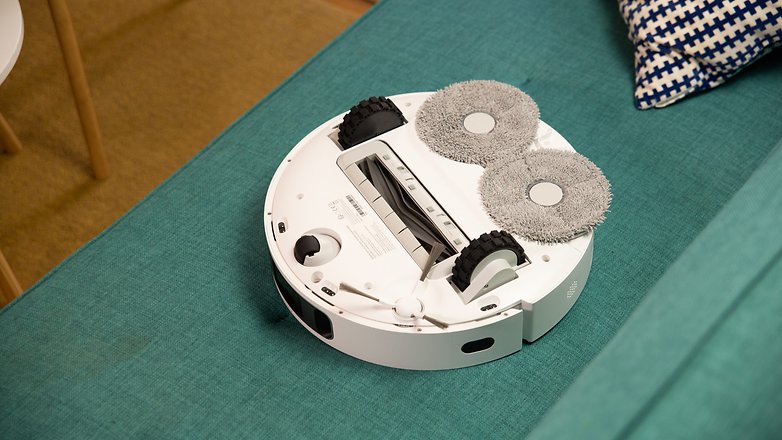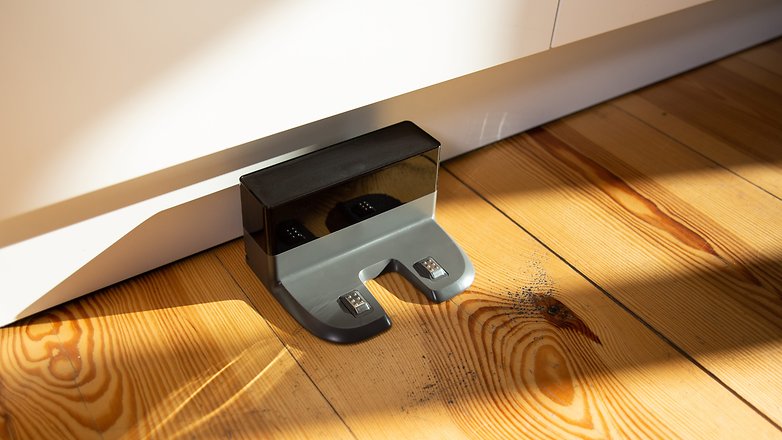
Robot vacuums are intended to clean your floors and carpets with little to no supervision. But it turns out these smart cleaners and moppers still need regular human intervention to keep them running smoothly. With this guide we will tell you how to properly take care of your robot vacuum in order to avoid damage or costly fixes in the future.
A few mechanical components make up every robot vacuum. So just like your car or bike, they need regular maintenance. Follow these steps regularly to extend the life span of your robotic cleaner.
Jump to:
Regularly remove hair and debris
How can you make a robot vacuum work effectively? A simple check of the roller and sweeping brushes will provide a more efficient cleaning performance. Those tangled pet or human hairs on the rollers and wheels strain the vacuum while it traverses your home.
If your robot cleaner does not come with an anti-tangle comb or brush, you should regularly remove those trapped hair and debris by simply using a scissor or safety cutter tool, ideally provided by the brand itself. It’s not required to do it after each cleaning routine. Once every two to four weeks will suffice, depending how hairy the creatures in your household are.
Xiaomi’s new Robot Vacuum S10T has an anti-tangle feature. You can check our best vacuum guide to find out which cleaner has the same advantage:
Dispose or clear dust bags and bins
The very basic care of owning a robot cleaner is to clear the dirt and debris collected in the dustbin after a complete cleaning routine. If your robot comes with an auto-empty station, then you of course only have to follow this procedure every couple of weeks. In any case, a filled bin lessens the suctioning capability of the robot as the air flow rate is reduced. So if you don’t want to be bothered by this task too often, then buying a robot vacuum with a self-empty dock or base such as the Roborock Q5 or Q7 is a better idea.
Wipe the sensors and cameras
Depending on the model, an array of sensors or special cameras enable your robot vacuum to detect objects, avoid obstacles, and prevent them from falling downstairs. Cleaning them every month will ensure that all spots of a room or area are all fully covered – and that your robot won’t fall down the stairs.
First, you need to locate where these sensors are located. Typically, you’ll find them at the front of your robot vacuum. Meanwhile, cliff sensors and the floor tracking module are positioned on edges at the bottom side. Use a dry and smooth cloth when wiping these parts to avoid scratches.

Replace roller brushes, mop pads, and filters
Most smartphone apps provided by manufacturers will notify users if it is time to replace the vacuum’s roller brush and filters. But it’s a sound idea to check the manual or internet when to ideally replace each component. Of course, seeing a significant wearing on the rubber bristles, means they’ll need a replacement.
For the filters and mop pads, some types are washable while the majority need to be discarded every two months or once a quarter given these are the nastiest parts of a vacuum cleaner aside from the dustbin. Additionally, the front caster wheel is recommended to be replaced after a year or two.
Battery maintenance: When to (fast) charge the robot vacuum
It’s the battery that keeps your cleaner running at peak performance. It is necessary to take care of it as well as the charging contacts of both the vacuum and the base. For instance, dirty contacts can slow down or even prevent the charging of your vacuum and can therefore affect the cleaning routine.
Find out some simple tips on how to extend your robot’s battery life specifically for Li-ion (lithium ion):
- Regularly wipe the metal contacts of the dock and vacuum with dry cloth (at least once a month)
- Position the charging dock in a cool and dry place and away from direct sunlight
- Charge the robot right after each routine
- Avoid fully charging to 100 percent or—even more important—emptying the battery all the way
Although precautionary maintenance tips are listed in every manual, you should know that the battery should generally last several years before it needs to be thrown away and replaced—which is also the lifetime of your precious robot.

How to fix the robot vacuum: Most common problems why the vacuum is not charging or working
One of the most common reasons why robot vacuums are not working is because of the battery issues. Going back to battery maintenance and cleaning the metal contacts could solve the problem. Otherwise, check for clogged objects in the roller brush and wheels. But if it’s beyond basic adjustment of controls, it’s better to have it checked for possible faulty sensors, a hardware electronics defect or a broken battery.
Modern robot vacuums are getting smarter every year. They also become harder and costlier to fix as the technologies accompanied are getting more complex. Having the basic knowledge of keeping your cleaning companion floor-worthy may save you time and money in the long run.
Do you have other robot vacuum tips you wanted to share? Let us know how you keep your little cleaner working effectively. Our comment section is open for any suggestion.






